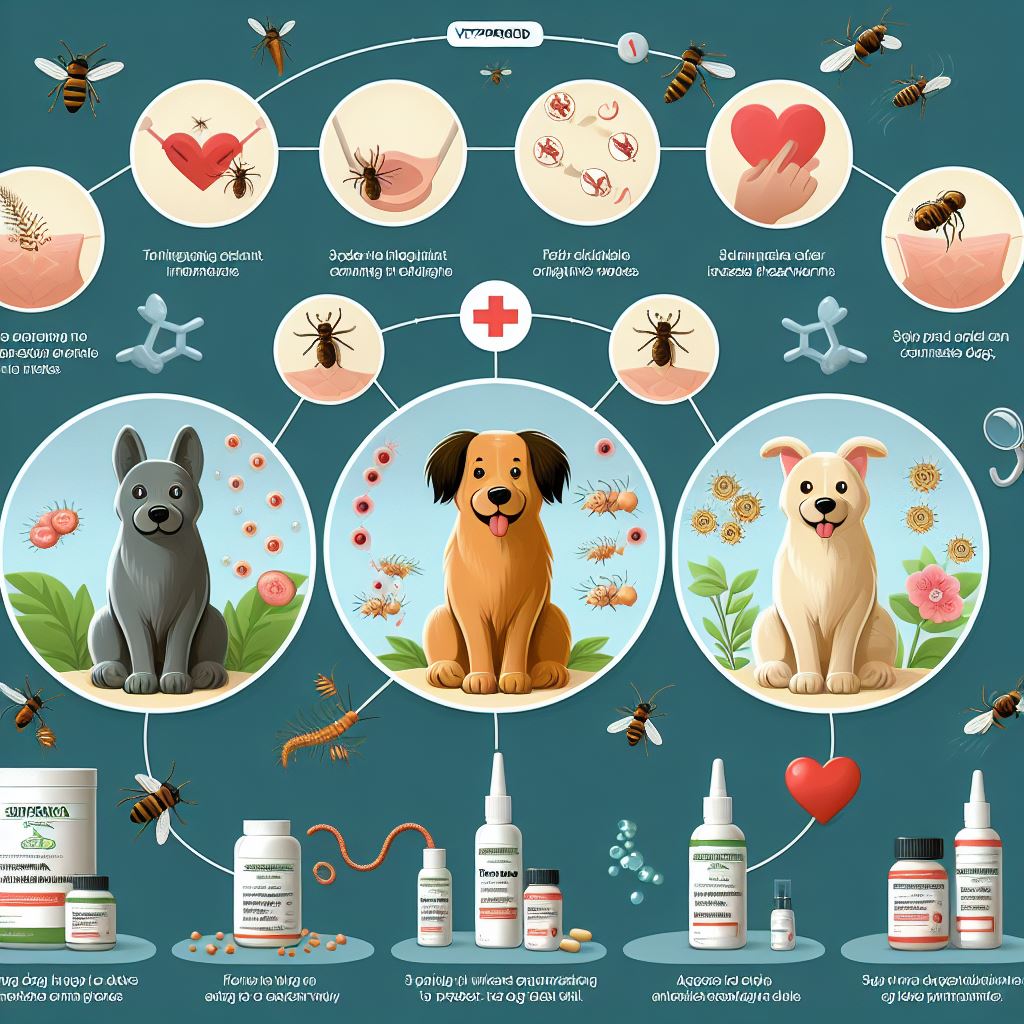5 Key Differences: Trifexis Vs Simparica Trio
When choosing between Trifexis and Simparica Trio for your pet’s health, understanding the key differences is crucial. From the active ingredients to administration frequency, each aspect plays a role in determining which option aligns best with your furry companion’s needs. Whether you prioritize broad-spectrum coverage or prefer less frequent dosing, these distinctions offer valuable insights into making an informed decision. Stay tuned to uncover how these factors can impact your pet’s well-being and your peace of mind.
Active Ingredients
When comparing Trifexis and Simparica Trio, understanding the active ingredients is crucial for selecting the right option for your pet.
Trifexis contains spinosad and milbemycin oxime as its active components. Spinosad works by targeting the nervous system of fleas, causing paralysis and subsequent death, while milbemycin oxime acts against heartworm larvae and certain intestinal parasites by disrupting their nerve transmission.
On the other hand, Simparica Trio combines sarolaner, moxidectin, and pyrantel. Sarolaner effectively kills fleas and ticks by interfering with their nervous system, moxidectin prevents heartworm disease and treats certain types of mites, and pyrantel takes care of roundworms and hookworms.
Both products offer broad-spectrum protection against parasites, but the specific combination of active ingredients can influence their effectiveness for your pet’s individual needs. Considering your pet’s health requirements and any specific concerns, consulting with your veterinarian can help determine which product aligns best with your furry friend’s well-being.
Treatment Spectrum
To understand the difference between Trifexis and Simparica Trio, consider their treatment spectrum for protecting your pet against various parasites.
Trifexis is effective against fleas, heartworms, roundworms, hookworms, and whipworms. This broad spectrum of coverage ensures that your pet is safeguarded against multiple types of parasites with just one medication.
On the other hand, Simparica Trio offers protection against fleas and ticks, as well as heartworm disease and certain intestinal parasites like roundworms and hookworms. While both medications provide essential protection, the variance in their treatment spectrum is crucial to consider based on your pet’s specific needs and the prevalent parasites in your area.
Trifexis and Simparica Trio each have their unique strengths when it comes to the range of parasites they target. Understanding the treatment spectrum of these medications is vital in making an informed decision about which one is best suited for your pet’s overall well-being and health.
Administration Frequency
For both Trifexis and Simparica Trio, the administration frequency is a key factor to consider in ensuring your pet’s continued protection against parasites. Trifexis is typically administered once a month, making it convenient for pet owners to stay on top of their pet’s parasite prevention regimen. This monthly dosing schedule simplifies the process and reduces the chances of missing a dose, ensuring consistent protection for your furry friend.
On the other hand, Simparica Trio offers an extended dosing interval of once every two months. This longer duration between doses can be appealing to pet owners looking for a less frequent dosing schedule. By administering Simparica Trio every two months, you can ensure that your pet receives the necessary protection against fleas, ticks, heartworms, and other parasites without the need for monthly administrations.
Consider your lifestyle and preferences when choosing between Trifexis and Simparica Trio to find the administration frequency that best fits your routine.
Potential Side Effects
Be mindful of the potential side effects that may arise when administering Trifexis or Simparica Trio to your pet. While both medications are generally safe and effective, there are some side effects to watch out for.
Common side effects of Trifexis include vomiting, diarrhea, lethargy, and decreased appetite. In rare cases, Trifexis can cause more severe reactions such as seizures or allergic reactions. It’s essential to monitor your pet after administering Trifexis and consult your veterinarian if you notice any concerning symptoms.
On the other hand, Simparica Trio may also have side effects, including vomiting, diarrhea, lethargy, and pruritus (itching). In some instances, Simparica Trio has been associated with neurological side effects like tremors or seizures. While these side effects are uncommon, it’s crucial to be aware of them and seek veterinary advice if your pet experiences any unusual symptoms.
Cost Comparison
When comparing the cost of Trifexis and Simparica Trio for your pet, it’s essential to consider both the initial price and long-term expenses. Trifexis is typically priced lower upfront than Simparica Trio. However, Trifexis requires additional flea protection, which can add to the overall cost.
Simparica Trio, on the other hand, is an all-in-one solution that includes flea, tick, and heartworm prevention, potentially saving you money in the long run by eliminating the need for additional treatments.
While the initial cost of Trifexis may seem more budget-friendly, the extra expenses for flea prevention should be factored in. Simparica Trio, although initially pricier, could be more cost-effective due to its comprehensive coverage. Consider your pet’s specific needs and consult with your veterinarian to determine which option provides the best value for your pet’s health and your budget.
Frequently Asked Questions
Can Trifexis or Simparica Trio Be Given to Pregnant or Nursing Dogs?
Yes, it is important to consult your vet before giving Trifexis or Simparica Trio to pregnant or nursing dogs. Their guidance ensures the safety of your furry companion and helps address any specific concerns you may have.
Are There Any Known Drug Interactions With Trifexis or Simparica Trio?
Yes, there are known drug interactions with both Trifexis and Simparica Trio. It’s important to inform your vet about any medications your dog is taking to avoid potential complications or reduced effectiveness.
Can Trifexis or Simparica Trio Be Used in Dogs With Pre-Existing Health Conditions?
Yes, Trifexis and Simparica Trio can be used in dogs with pre-existing health conditions. However, it’s crucial to consult your vet first to ensure that these medications are safe and suitable for your dog’s specific health needs.
How Quickly Do Trifexis and Simparica Trio Start Working After Administration?
After administration, Trifexis typically starts working within 30 minutes to kill fleas, while Simparica Trio begins to be effective within 3 hours against fleas, ticks, heartworms, and intestinal parasites. It’s important to follow dosing instructions for optimal results.
Are There Any Age Restrictions for Using Trifexis or Simparica Trio on Dogs?
There are age restrictions for using Trifexis or Simparica Trio on dogs. Make sure your furry friend meets the minimum age requirement specified by the manufacturer before administering these medications to keep them safe and healthy.
Conclusion
In conclusion, when comparing Trifexis and Simparica Trio, it’s important to consider their active ingredients, treatment spectrum, administration frequency, potential side effects, and cost.
While Trifexis targets fleas, heartworms, and intestinal parasites with monthly dosing, Simparica Trio protects against fleas, ticks, heartworms, and worms every two months.
Each medication has its own set of advantages and considerations, so it’s essential to choose the one that best fits your pet’s needs and your preferences.







